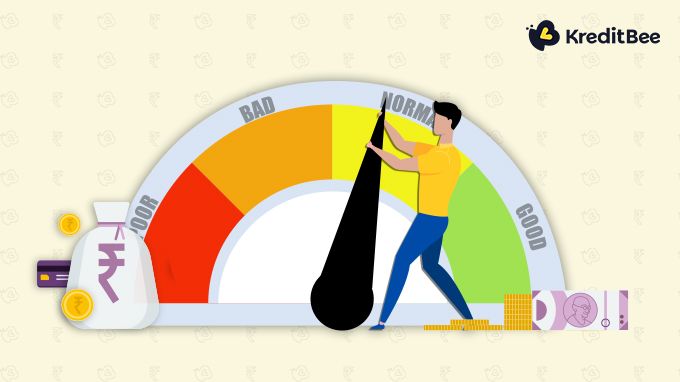Curious about your creditworthiness? Your CIBIL Score, a three-digit number, is the key. It's a reflection of your financial health and plays a pivotal role
In 2010, FICO released a report about bankruptcy using a mock scenario of two different credit profiles. This report showed that bankruptcy could cost up to 240 points for an individual with a CIBIL score of 780 and 150 points for someone with a 680 credit score. While bankruptcy can significantly diminish your credit scores, it can also complicate your relations with your personal loan provider and negatively impact other financial matters. It is, therefore, essential to take immediate measures to minimize the long-term damage to your credit resulting from bankruptcy. Read on to know more about how you can build your credit after bankruptcy.
1. Review Your Credit Report
The first step towards rebuilding your credit history is to review your credit report. People who have gone insolvent can get their reports from CIBIL. Once you have the report, make sure it’s current and has no discrepancies. Go through the entire report and uncover all your old debts so you can pay them off immediately. Bankruptcy can reflect on your credit report for up to 10 years, depending on the type of bankruptcy you have filed. Your credit score might be low until your bankruptcy is discharged. All you need to do is make the payments on time while keeping your credit utilization low. You might start seeing an improvement sooner.
2. Set a Budget
People who have filed for bankruptcy should start paying their bills on time to begin restoring good credit. The highest weighted element of the credit scoring model is paying bills on time, and you can achieve this by setting up automatic bill payments. Set up a realistic budget every month so that you have enough funds for your automatic payments. Besides, try to minimize new debt - this affects your credit score and prevents you from staying within your budget. A good rule is to have your utilization below 30 percent per card/credit line. For instance, if you have two credit cards with a ₹50,000 credit line on each card, instead of using one credit card for transactions worth ₹25,000, you can split the usage to ₹15,000 on one card and ₹10,000 on the other. Doing so will ensure your utilization remains less than 30 percent on both cards and will help you manage your CIBIL score.
3. Use Secured Credit Cards
People are generally inclined to use debit cards after a bankruptcy to avoid racking up any new debt. It is essential to understand that credit bureaus are not informed about any activity on your debit cards. Therefore, using them won’t help you rebuild your credit. Instead, you should consider using a secured credit card that requires a cash deposit to open an account. Your deposit is often equal to your credit limit, and the issuer holds your deposit as collateral. The activity on your secured card is regularly reported to the credit bureaus, thus helping you rebuild positive credit history.
4. Diversify Your Credit
If you’re trying to rebuild your CIBIL score after bankruptcy, the type of credit accounts you have also matter. Availing of cheap personal loans is one way to diversify your credit. You can use the money borrowed from personal loan providers can be used for a variety of requirements, including investing, home repairs, and making timely payments. Having more than one type of account can positively impact your credit score. Adding an installment loan can also help diversify your credit and strengthen your credit history. An installment loan is a type of contract or agreement involving debt that you repay over time with a specified number of scheduled payments. These loans can be easier to budget since the amount due is the same for each month.
5. Use Piggybacking
A common way to build credit more quickly is piggybacking. Talk to a family member or spouse with good credit who can add you as an authorized user to their account. After they add you to their account, your credit usage will be reported in both your name and the primary account holder’s name. It is vital to make your transactions responsibly as both parties can either benefit or be harmed by the activity associated with your account. You can also ask a friend or relative to act as your co-signer. This way, your payments are reflected on both yours and your co-signers’ credit histories.
Wrap Up
While some people think that filing for bankruptcy will give them a clean financial slate, this isn’t exactly true. You must learn from the mistakes that brought you into bankruptcy and take an honest look at your budget and spending habits. You need to figure out where you need to cut back or exercise more self-control. KreditBee is your trusted personal loan provider that offers a range of personal loans at competitive interest rates and comfortable repayment tenures. Download the KreditBee app from google play store, apply for a personal loan. Call 080-44292200 or email us at [email protected]. You can also fill out our Contact Form, and we will get back to you as soon as possible.
AUTHOR
KreditBee As a market leader in the Fintech industry, we strive to bring you the best information to help you manage finances better. These blogs aim to make complicated monetary matters a whole lot simpler.







